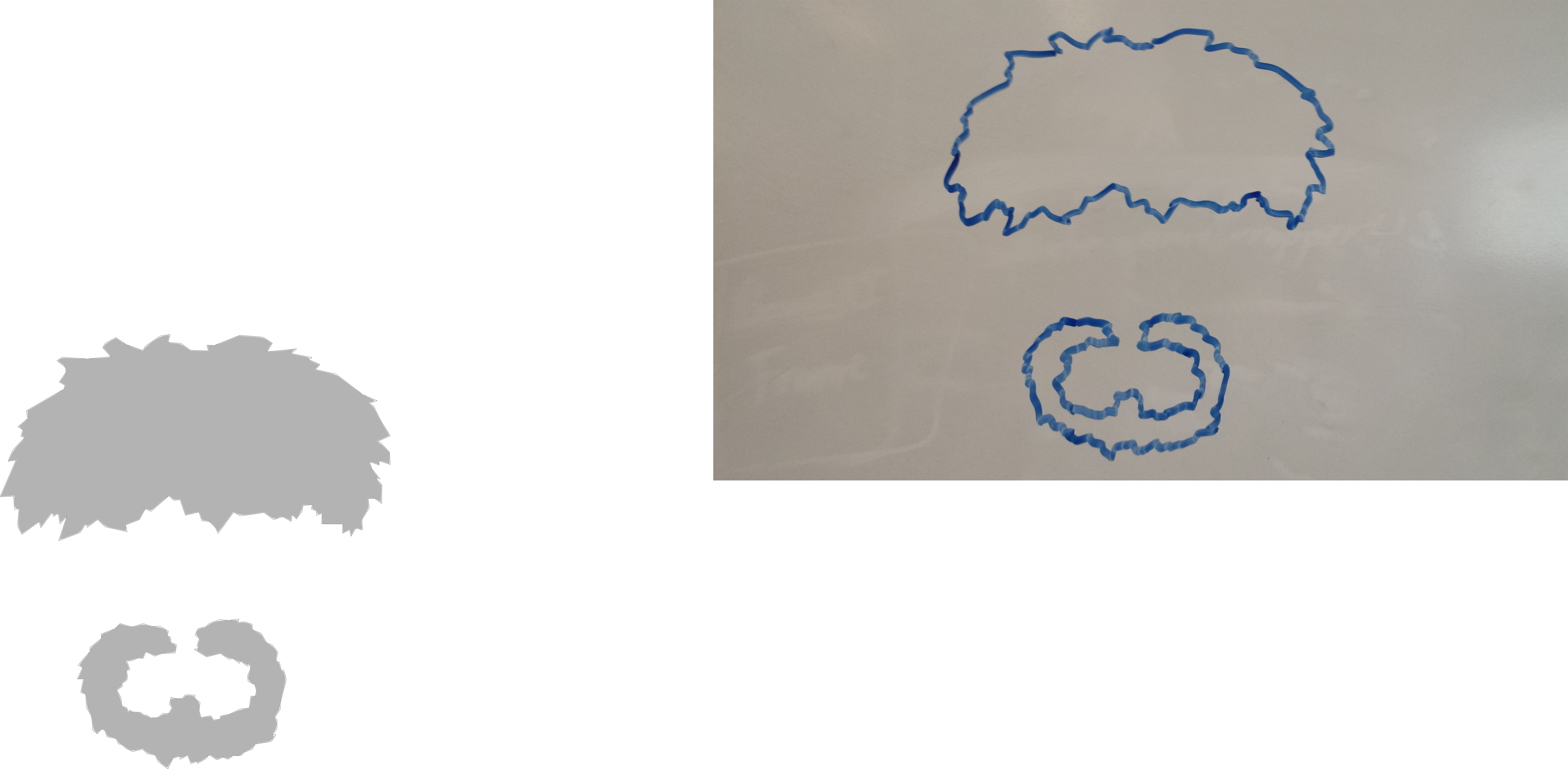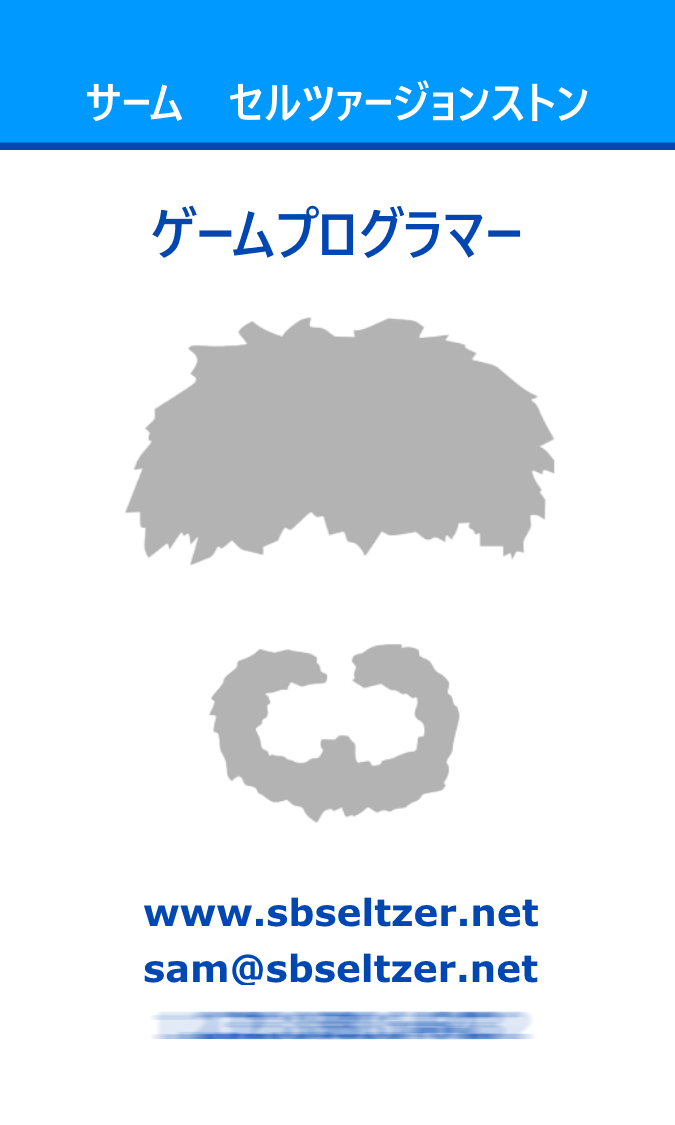Feb 12, 2017
GDC 2017 Prep: Business Cards
This will be my third year attending the GDC, and it’ll be my second time ordering business cards. I’m not going to pretend like I’m an expert, but I learned a lot last time I printed my cards. By comparison, this time was a walk in the park. I think this is a great opportunity to share that learning experience with anyone who needs to go through this process for the first time and doesn’t know where to start.

Business cards are like currency at the GDC. It’s more or less expected that you’ll be exchanging them with every single person you meet. I have lots left over from the past two years, but this year I plan to be interacting with more Japanese developers. As such, I’ll be printing a second set of cards in Japanese.
If you’re going to be doing an exchange with 日本人, there’s a great deal of etiquette you may wish to follow. For starters, having Japanese (or at least bilingual) versions of your business cards is a plus. If you’re curious about other etiquette associated with exchanging cards, ask your favorite search engine. It’s really fascinating.
Let’s walk through my steps taken from 2 years ago. I had 2 weeks before GDC and based on average turnaround for print shops I decided I had about 2 days to design a card for myself.
Design Process
My first step was to choose a way to brand myself. Think of what helps people to remember you or the company you represent. In my case, I wasn’t representing anyone but myself. People have always said my hair is what they use to remember me. I can’t blame them. So that’s how we end up with this.

The top right is a sketch I scribbled on a whiteboard in about 30 seconds. I snapped a picture, loaded it into Inkscape, and traced it with a vector outline. I then did a simple fill and viola! Instant silhouette. That’s how we get the bottom left logo.
Editor Tips
Before starting on a card design, it’s a good idea to prepare yourself accordingly. Here are a few straightforward tips if you’re a DIYer like myself.
- Find some print shops first and download their business card templates. For printing there’s usually a trim zone, a bleed zone, and safe zone. All important content (like text and logos) must be in the safe zone. Print templates outline these for you.
- Use an image editor that allows layers. This allows you to make your first layer the print template. You can then set its alpha (opacity) to maybe 70% and toggle it to check if your design fits well.
- Dedicate a layer to anything you consider a separate element. This makes editing later and toggling parts of it much easier. In my case there are 6 layers on the front side (see below). The template, the header background (that blue top part), my name, my title, my logo, and my contact info. I later added 2 extra layers for my Japanese name/title, making for a total of 8 layers now.
- Always keep an easy-to-edit copy lying around. I use Paint.net, so I always keep the
.pdnfiles handy. This made creating a Japanese version super easy over 2 years later.
My Design
Then I went about making the front and back sides of the card. I wanted them to resemble the color scheme of this website, which had come into existence not too long before making the card.


It’s uncommon to do a portrait orientation for a business card. Most are landscape orientation. The reasoning here is that when someone is reviewing a stack of cards later, they will need to rotate yours to read it. It stands out. It helps people remember you, and getting people to remember you is the name of the game.
To the right is the back side of my card. Many people will leave this blank, but in my case I added what I think to be a cute joke.1 Yet another thing to make myself memorable.
But wait… it’s empty? Indeed, this is a space for the recipient of my card to fill out. It’s common for people to write notes on business cards, particularly to help remember talking points, what you looked like, etc.2 Anything that helps in writing a personalized follow up email later.
And without further adieu, here are the English and Japanese versions side by side.


A misnomer here is that the job title on the English one says Game Developer while the Japanese one says Game Programmer. I figured being more descriptive may help alleviate whatever inevitable language gaps there are.
Card Stock
Next up is choosing card stock. I highly recommend using an uncoated stock (no finish). Many places offer gloss/matte finishes, but these are more difficult to write on. I almost always forget people with glossy finishes, and similarly with matte. The uncoated cards are easy to write on, provided there’s some white space. Indeed, it is no coincidence my card has plenty of white space. Choosing a relatively thick stock also gives your card a sturdy feel. It’s nice and tactile, which reflects well on you, strangely enough.
Ordering Cards
So the big gotcha about ordering any printed materials is that many printers prefer the CMYK colorspace. Most images are saved in RGB. Some sites will automatically convert for you, but it’s hard to know what kind of color shifting will take place. The thing is, when you convert to CMYK some colors will appear darker on a computer screen, but once on paper they tend to look normal again. Pretty odd concept.
Try throwing some images through a CMYK converter and see how they turn out. They will never look exactly the same, but that’s totally fine. Just make sure the converter knows what your card finish is so that it can intelligently convert colors.
Review
So here are some basic principles I suggest you adhere to when making a personal business card.
- Brand yourself. Stand out and make it memorable.
- Scribble friendly. Make your card easy to write on. Plenty of white space, sturdy uncoated card stock, etc.
- Use a good image editor that supports layers and load up your print shop’s template as a starting point.
- Don’t forget to check if CMYK is required by your print shop, online or otherwise. Be sure to tell your converter what card stock you’re using.
Hope this saves someone else the hassle of researching in an 8 hour frenzy. If you’re looking for a good print shop with a quick turnaround, check out UPrinting. It’s what I used, but there are many options out there. Do some research and compare prices/options yourself if you’re unsure.
-
For those of you who are not programming-savvy, it’s a header file with my name. Header files are what the C/C++ languages use to list out functions, classes, and other parts that make up a program without actually implementing any logic. These files are often filled with comments, text that is ignored by the compiler, to document the code. The slashes and asterisks represent one such comment block. ↩
-
Don’t do this in front of people, especially if you’re doing a formal Japanese exchange. It can be considered a sign of great disrespect. ↩
You're welcome to contact me though.